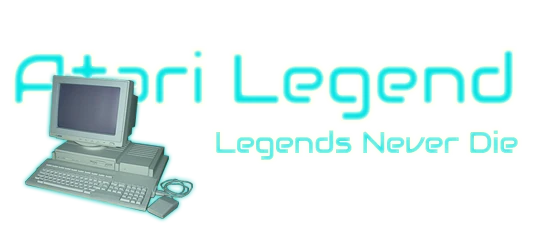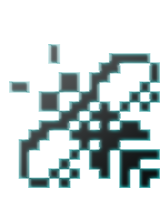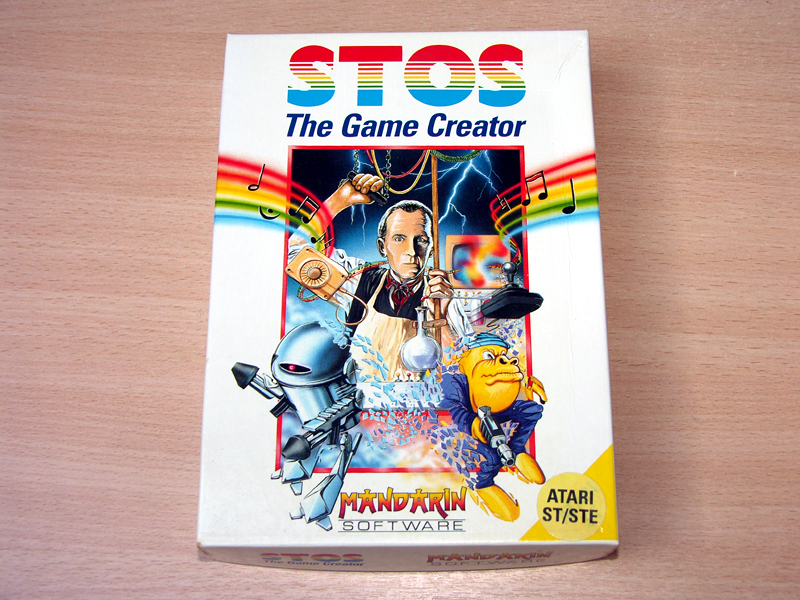







In 1980, Sir Clive Sinclair released the cheapest homecomputer ever made, the ZX80. Mr Sinclair was on a mission. He wanted to teach a generation how to program a computer. And it was a success. Nick Harper is a prime example. He started out on the ZX Spectrum, went on the create one of the best STOS games on the Atari ST and today he is a successful game developer who has worked for several big companies like Sony and Ubisoft, with numerous triple A titles on his resumé.
There is currently no profile available in our database
1) Introduction
2) Computer history
3) The game that started it all
4) With a little help from ... STOS
5) Ozone's history
6) The biggest ST magazine on the planet
7) a Lucrative business?
8) More ST goodies
9) Games, games, games...
10) Life after the ST
11) Alltime favorite
12) Words of wisdom

Many games were created using STOS. Most of them were instantly recognisable. Ozone however, was different!
1) Hello Nick, first things first. Who is Nick Harper and what keeps him busy these days?
Hi, so I’m Nick. Right now I run a mobile games studio in the UK where we have made titles such as Angry Birds Transformers and the official mobile game of the TV show Dancing With The Stars. I’ve been quite fortunate in my career, being able to work at companies such as Sony and Ubisoft on some great console titles from the PSOne through to the PS3 until I shifted over to mobile development. I also wrote a few Flash games - when Flash was popular - which have been published around the internet. Other than game development I am busy raising my three kids with my wife, Nina!
2) Tell us about your computer history, and especially, why did you buy an Atari ST?
I was lucky enough to be bought a Sinclair ZX Spectrum for Christmas, when I was 10 or 11 I think. It was back in the day when hardware had to be plugged manually by the owner, and my father accidentally wired it up wrong and blew it up on Christmas day. I had to wait a very long 30 more days before a replacement arrived, and from there I was hooked. Not only did I love playing the games of course - mostly the games made by Ultimate back in the day (known as Rare these days) but I also loved programming. I found it so satisfying to write some code and to see things move on the screen. I used to just experiment but would often run out of memory as my computer only had 16k RAM!
A few years later my parents bought an Atari ST for me and my brother, although I basically stole it and kept it in my bedroom! I remember the 16-bit revolution and how there was so much more power than the Spectrum, plus of course it had a lot more memory which was great. But I wasn’t a great coder - all my previous stuff had just been in BASIC - and there wasn’t a tool to make games, initially.
3) What is the history of Ozone? Where did you get the idea for this game?
At the time there was a lot of talk in the media about the ozone layer and how we were destroying it, so I thought it’d be interesting to make a game where you had to reach the ozone layer. I concocted some story about an evil genius who was sending a hot air balloon up to the sky to destroy the ozone layer and you had to get there first to stop him. Originally you had to race against this balloon, but in the end I turned it into the hourglass timer.
I also had this idea about a game mechanic where you could stick to the scenery and walk up and around walls. I wrote a prototype of that and it worked pretty well - in fact Ozone 2 used that mechanic (but that’s another story!). Anyway, being a fickle teenager I got bored of that idea and also felt the input was a bit clunky, so I turned it into a standard platformer with the goal of “reaching the top”. The rest just became an exercise in feature creep, really. I would just keep adding things if I liked them as an idea. I spent a lot more time than I should’ve on the orange blobs that moved around the PRESS START screen, just because I enjoyed working out their behaviour algorithm. I really didn’t know what I was doing, I was just enjoying creating stuff.
4) Can you explain in your own words what STOS is (compared to a BASIC or C language) and why did you decide to build Ozone using this software?
I’d say STOS is a supersized version of BASIC, that uses custom libraries to enable creators to control graphics and sound in ways that are very challenging in just BASIC, or require custom routines in another language such as C. So it kind of cuts out the hard work of writing an engine and lets the user just get on with writing the game logic.
I chose to use STOS because I didn’t believe I was a very good coder, and no-one had given me any actual training in how to code - I’d just taught myself in my spare time while at school. So it felt like a great tool to help me deliver my vision without having to master machine language or anything complicated like that.
5) When I look at the copyright of Ozone, it says it was released in 1989. Why did it take 3 years for ST Format to pick it up for review?
Hmm I have absolutely no idea. I remember finishing the game while I was supposed to be studying for my A-levels in high school in the UK. And then I finished it off in the summer, more-or-less. Like I said, I’d just keep making new bits and adding it on. Conveniently I lived about 10 minutes away from the publishers of STOS, so I decided to drive in and ask them what they thought. They liked what I’d made enough to offer me a placement on the spot, in between high school and university. So I worked there for a year doing some coding, some production, and also working on some of the AMOS demos as well. It gave me a good grounding into software development, but I never thought I was good enough to do it as a proper career so I went off to university instead. It would be four of five years later when I got back into development when I started working at Sony on PlayStation One games.
6) How did you get in touch with ST Format and how did you feel about the release of your game on their coverdisk?
I wish I could remember. Thinking about it I wonder if they got in touch with me. The game was on a public domain shareware disk and I think they picked it up and asked if I’d be happy to put it on the coverdisk. Of course I said "Yes".
7) I have read about other shareware developers on the ST not making any money from their product. The fantastic Starball is a sad example. However, this game was released in 1994, when the ST gaming scene was dead. Did you make some well deserved cash with your game? How was the reception?
No not really. I was super excited because I think ST Format gave the game 94% in their review or something, so I would brag to my friends that my game was better than whatever was popular at the time, without really thinking how generous that score was.
Anyway, I then sat back and waited for the cash to arrive, but it didn’t. There were no wire transfers or anything back then so people had to write a letter and send me a cheque. I think I made about £250 in total but it certainly didn’t change my life - maybe a few free trips to the cinema! I remember I did receive a postal order from Australia for something like $3 Australian from a young kid, but I felt too guilty cashing it in as the postage to send it was nearly as much!
8) Later on, you created two more games for the Atari ST: the sequel to Ozone and Balls Up. Both were coded in STOS again. I have read Ozone could not be released commercially because of the fact it was coded in STOS, yet you continued building amazing games in STOS. Can you tell us why? And can you share some of the history and memories of these two games? Also, I see these games were developed by POON Software?
I was working at Europress Software and decided to sound more professional, so rather than just say “by Nick Harper” I thought I could be Harpoon Software and then one of the QA guys said I should shorten it to "Poon". I think he was being rude but I was too naive to realise so that’s what happened.
Ozone 2 was really me completing the original prototype, although I must confess I don’t think it’s possible to beat level 2 as I think there is an impossible jump in there. So apologies to anyone who spent ages trying!
Balls Up was really just another idea I was playing around with. I really liked the idea of a player character that you had limited control over, but had to keep safe. And I also wanted to make a game that primarily used the mouse rather than a joystick. So in Balls Up you had to place instruction tiles on the ground to control the ball and keep it from danger. Kind of like telling PacMan how to get the pills.
As always there was no real agenda or schedule - I just made stuff because I loved doing it and being creative. It was a great time as it was just freedom and a desire to problem solve to make my ideas come true.
9) Did you create games prior to Ozone? And tell us a bit about the years after the Atari ST. Do you perhaps still have unreleased work on the ST you like to share with the community?
I made several unfinished games prior to Ozone, and yeah I’m lucky enough to have found myself a job in the games industry where I’ve worked on all sorts of games. Some I’m really proud of, some less so. Weirdly some of my proudest games have been the Flash games I made as a hobby, probably because they remind me of those early years where it was just me and the keyboard and my imagination trying to make something work.
10) Are you still using the Atari ST today?
I’m afraid I’m not.
11) Are you an active gamer? And what is your all time favorite computer game?
Yes I play games a lot. Mostly for work - it’s strange because if you make games you find yourself analysing why the creators made those decisions, which sometimes just takes the pure joy out of the experience.
My all time favourite game would be the Zelda series by Nintendo. Not only do I love those games on a technical level, but I have also been fortunate enough to have been exposed to some of their methodologies through my time when I worked at Ubisoft and so I can also appreciate the immense attention to detail and care that goes into those titles.
12) How do you like to end this interview? Any wisdom to share with the Atari ST scene?
Reading back on this, I realise that I had a lot of doubts about my abilities when I was younger. So I’d say to anyone reading, believe in yourself and strive to make a difference and create something amazing - because the only thing holding you back is yourself!
The ST gave me many hours of joy, from playing the games but also very much from creating my own. It gave me the opportunity to meet Francois Lionet, the creator of STOS, and fuelled my passion for gaming and creativity which in turn has given me a career getting close to 25 years of game development now. I find it amazing that people are still playing around with the ST and making stuff for it - it’s that dedication and passion that is really enthralling and amazing to me, so good luck to everyone!
Thank you very much for this short but very inspiring interview, Nick. Best of luck to you and the family!
August 5, 2025 by grams88
Martin Brownlow is a living legend. Best known among ST fans for creating the beloved PD/shareware classics Grav and Grav 2, his games are still cherished by many to this day. From a young age, Martin knew he wanted to make games for a living...and he made that dream a reality. In fact, he’s still doing it today. Discover the full story and much more in this exciting new interview.
October 4, 2024 by grams88
Stacey Jamieson began his career at DMA Design, working on titles such as Oh No! More Lemmings, Walker, GTA and others. Over the years, he moved on to Electronic Arts (EA), where he contributed to major games like the Star Wars Battlefront series, Mass Effect, and Need for Speed. Today, he is the co-founder of Expression Games, where he continues to pursue his passion for game development. What an exciting career!
July 29, 2024 by grams88
Who doesn't love a good underdog story? Chris Sharp is a noteworthy apprentice of the renowned François Lionet, as he mastered the art of coding with the almighty STOS Basic. Chris crafted a few games for our cherished ST, including fan favourites like Magic Tomb and the Freaked Out series. Intrigued? Dive into our interview to revisit the era when game development could still be a solo endeavour.
July 16, 2024 by grams88
When Sega released its Master System, it came bundled with the game Alex Kid. To this day the game remains very popular, loved by many. One of those people is Terry Lloyd. More so, Alex Kid was the main inspiration for the Atari ST platform classic Axel's Magic Hammer. But that is just one of his many accomplishments. Terry has been around the block. Working as an artist and game designer at the beginning of the 80's for Gremlin Graphics, he then moved on to Core Design, which he helped get off the ground. During the 90's he contributed to founding the company Malibu Interactive. On the Atari ST, Terry's resumé include Dynamite Dux, Car-Vup, Rick Dangerous 1 & 2, Torvak the Warrior, WarZone and many more. Read all about this veteran of the games industry in this exciting interview.
April 18, 2024 by grams88
It doesn't always have to be about computers, coding and graphics. Adrian Powell, the artist behind the original Lemmings game, crafted all its artwork, including box art and promotional materials. His passion for painting lemmings has persisted over time and he is still painting lemmings to this day. Powell's work remains influential and has helped selling millions of copies of this classic (ST) game.
Currently 0 registered users online
In the past 24h there were 2 registered users online